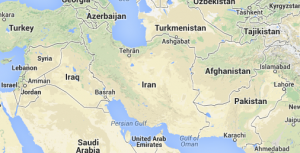Parallel Processing: AUMF Assad Spanking and Then Article II Regime Change
There’s a fundamental dishonesty in the debate about Syria derived from treating the authorization to punish Bashar al-Assad for chemical weapons use in isolation from the Administration’s acknowledged covert operations to support the rebels. It results in non-discussions like this one, in which Markos Moulitsas refutes Nicholas Kristof’s call for bombing Bashar al-Assad based on the latter’s claim we are currently pursuing “peaceful acquiescence.”
And war opponents don’t have to deal with arguments like this one, from the New York Times’Nicholas Kristof:
So far, we’ve tried peaceful acquiescence, and it hasn’t worked very well. The longer the war drags on in Syria, the more Al Qaeda elements gain strength, the more Lebanon and Jordan are destabilized, and the more people die.
The administration has gone to great lengths to stress just how limited air strikes will be, and to great pain to reiterate that regime destabilization is not the goal. So I’m not sure where Kristoff gets the idea that such attacks will have any effect on the growing influence of Islamists in the region. But let’s say that by some miracle, the air strikes do weaken the Assad government, it is the “Al Qaeda elements” that stand most to gain, as they are be best placed to pick up the pieces.
Markos is right: the Administration has gone to great lengths to claim this authorization to use force is only about limited bomb strikes, will involve no boots on the ground, and isn’t about regime change. Here’s how the President described it:
I have decided that the United States should take military action against Syrian regime targets. This would not be an open-ended intervention. We would not put boots on the ground. Instead, our action would be designed to be limited in duration and scope.
But both are ignoring that at the same time, the Administration is pursuing publicly acknowledged (!) covert operations with the intent of either overthrowing Assad and replacing him with moderate, secular Syrians (based on assurances from the “Custodian of the Two Mosques” about who is and who is not secular), or at least weakening Assad sufficiently to force concessions in a negotiated deal that includes the Russians.
Yet here’s how the President’s National Security team discussed the other strand of this — lethal support for vetted rebels — from the very beginning of Tuesday’s hearing before the Senate Foreign Relations Committee.
SEN. CORKER: What I’m unaware of is why it is so slow in actually helping them with lethal support — why has that been so slow?
SEC. KERRY: I think — I think, Senator, we need to have that discussion tomorrow in classified session. We can talk about some components of that. Suffice it to say, I want to General Dempsey to speak to this, maybe Secretary Hagel. That is increasing significantly. It has increased in its competency. I think it’s made leaps and bounds over the course of the last few months.
Secretary Hagel, do you — or General, do you want to —
SEN. HAGEL: I would only add that it was June of this year that the president made a decision to support lethal assistance to the opposition, as you all know. We have been very supportive with hundreds of millions of dollars of nonlethal assistance. The vetting process, as Secretary Kerry noted, has been significant. But — I’ll ask General Dempsey if he wants to add anything — but we, Department of Defense, have not been directly involved in this. This is, as you know, a covert action, and as Secretary Kerry noted, probably to go into much more detail would require a closed or classified hearing.
General Dempsey?
SEN. CORKER: As he’s answering that, and if you could be fairly brief, is there anything about the authorization that you’re asking that in any way takes away from our stated strategy of empowering the vetted opposition to have the capacity over time to join in with a transition government, as we have stated from the beginning?
Is there anything about this authorization that in any way supplements that?
GEN. DEMPSEY: To your question about the opposition, moderate opposition, the path to the resolution of the Syrian conflict is through a developed, capable, moderate opposition. And we know how to do that.
Secondly, there’s nothing in this resolution that would limit what we’re doing now, but we’re very focused on the response to the chemical weapons. I think that subsequent to that, we would probably return to have a discussion about what we might do with the moderate opposition in a — in a more overt way. [my emphasis]
The President, as part of covert action (that is, authorized under Article II authority), decided to lethally arm vetted rebels in June. Those efforts were already increasing significantly, independent of the spanking we’re discussing for Assad. Nothing related to the spanking will limit those efforts to arm the rebels (no one comments on it here, but elsewhere they do admit that spanking Assad will degrade his defenses, so the opposite will occur). And General Dempsey, at least, is forthright that the Administration plans to return to Congress after the spanking to talk about increased, overt support for the rebels.
So there’s the spanking.
And then there’s the lethal arming of rebels which is not a part of the spanking, but will coincidentally benefit from it and has been accelerating of late.
Spanking without regime change. And regime change (or at least a negotiated solution).
Which returns us to the content of the AUMF. Read more →

